Standard Liège did not have the greatest start to the new season under their new manager, Carl Hoefkens, with the Belgian side losing 3 of their opening four matches and drawing the other. However, the Belgian manager has begun stabilising the side, with Standard unbeaten in their last six matches, putting them only two points back of the Championship playoff places. A lot of this stability has come defensively, with Standard conceding the second-fewest goals in the Pro League this season.
This tactical analysis and scout report will take a look at the defensive side of the game for Standard Liège, as well as a brief look at the attack as well. While defensively, they may be solid, there is still work to do going forward, with only 10 goals scored this season, one of the lowest tallies in the Belgian Pro League.
Covering well in defensive phases to prevent spaces
The main thing that Standard Liège have been able to do well in the last few matches defensively is tracking and passing runners on. Under Hoefkens, the Belgian side have typically set up in some variation of a back four system defensively, but at times recently have also shifted to a back five to offer more solidity from a defensive standpoint.
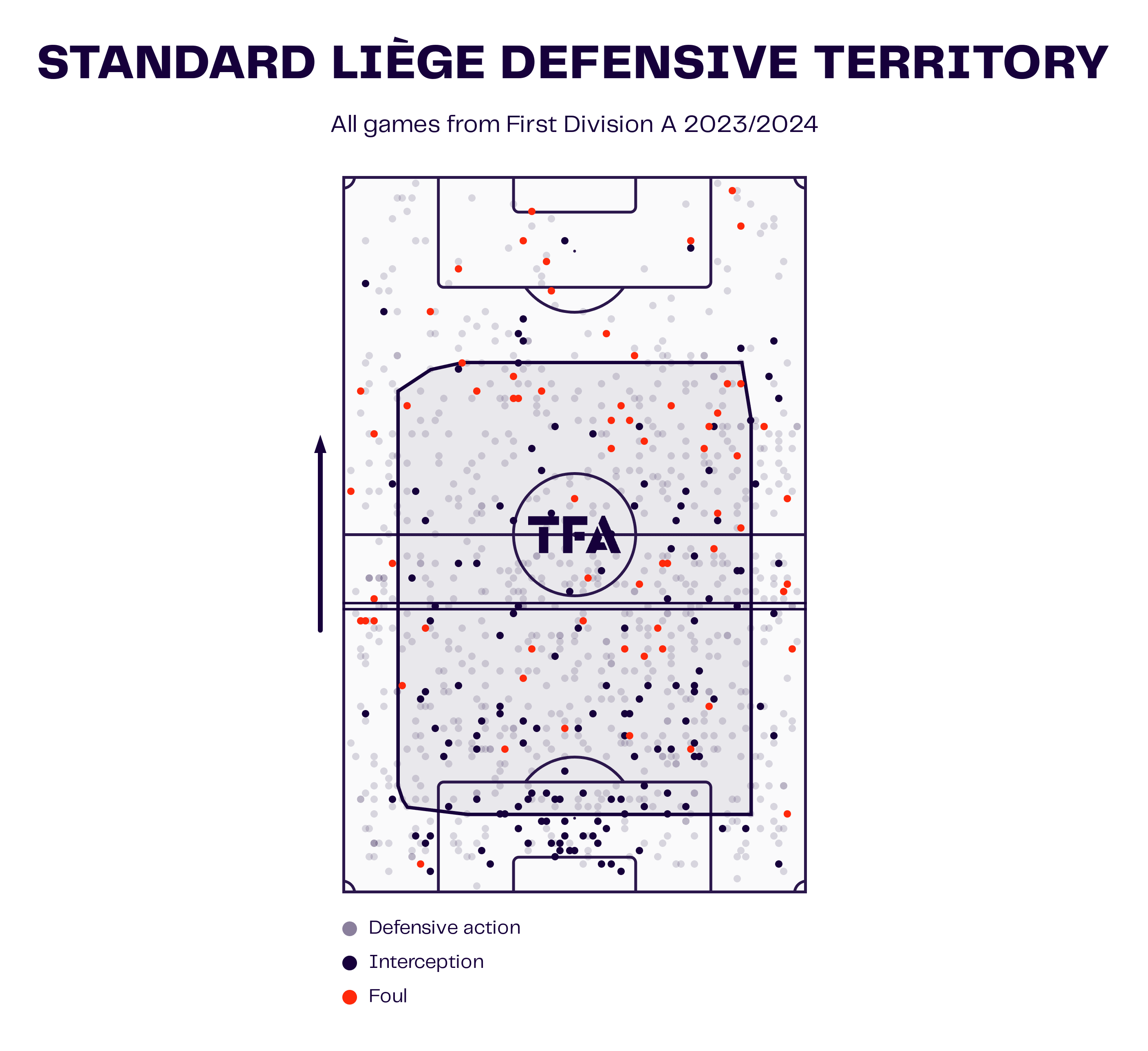
The data viz graphic above shows the defensive territory of Standard Liège so far this season, showing the average areas in the pitch where they tend to commit defensive actions. As we can see from this graphic, the average area of their engagement is right around the midfield circle, with the Belgian side not looking to operate with an extremely high line. As mentioned, what they have been able to do really well in previous weeks is not get pulled out of position by opposition movements, instead passing players on to limit the chances of a defensive breakdown.
Being able to stay in this solid defensive structure has allowed Standard the ability to have players in superior positions for quick counterattacking moves, something they have shown recently to be very effective at in the last few matches. Another thing they have been able to do well recently is to defend the penalty box extremely well when balls are played into this area, as illustrated by the amount of interceptions they have in this zone. A lot of credit can also go to goalkeeper Arnaud Bodart, with the Belgian having a superb season so far between the sticks for Hoefken’s side.
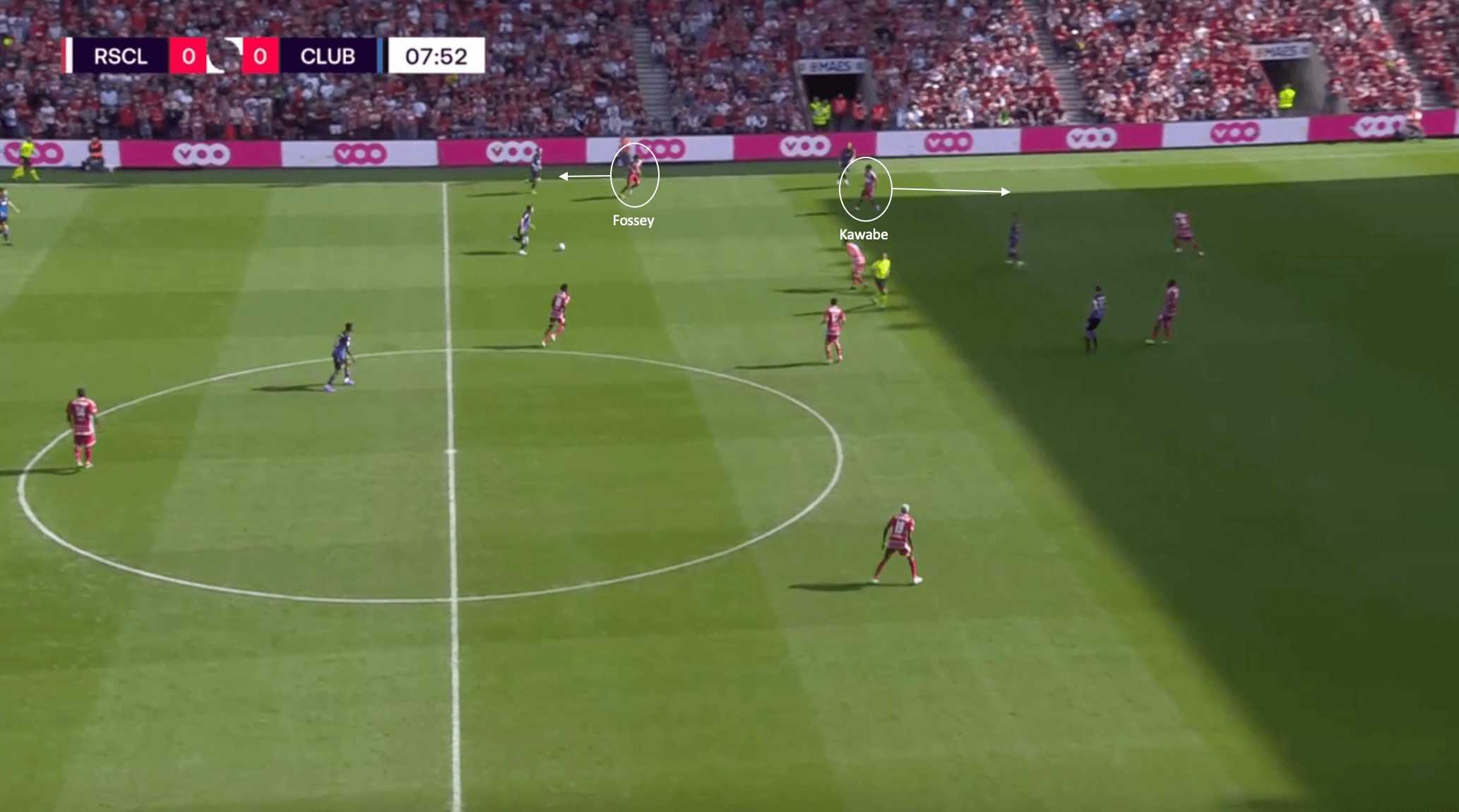
The image above shows an example of the Standard players doing well recently to track back in defence and cover gaps left by defenders coming out of shape. In this phase of play above from their recent derby match against Club Brugge, the ball is in possession of the away side, and Standard are forced back into their defensive shape. The ball is initially played wide to the Club Brugge fullback, with fullback Marlon Fossey stepping out of the backline to put pressure on and engage the fullback.
Noticing the gap being left, midfielder Hayao Kawabe drops back into Fossey’s right-back position, covering for him and eliminating the possibility for the wide midfielder for Club Brugge to move into this space unmarked. He is then tasked with marking Phillip Zinckernagel, with the ball played from the central defender into this wide channel. However, Kawabe does well and prevents Zinckernagel from being able to progress the ball into the penalty box. The result is that Standard can then clear their lines and reset defensively.
This shows the interchange and positional awareness that Standard Liège have demonstrated in recent weeks, which is definitely something for manager Carl Hoefkens to build upon as the Belgian Pro League season starts to get to its most important point.
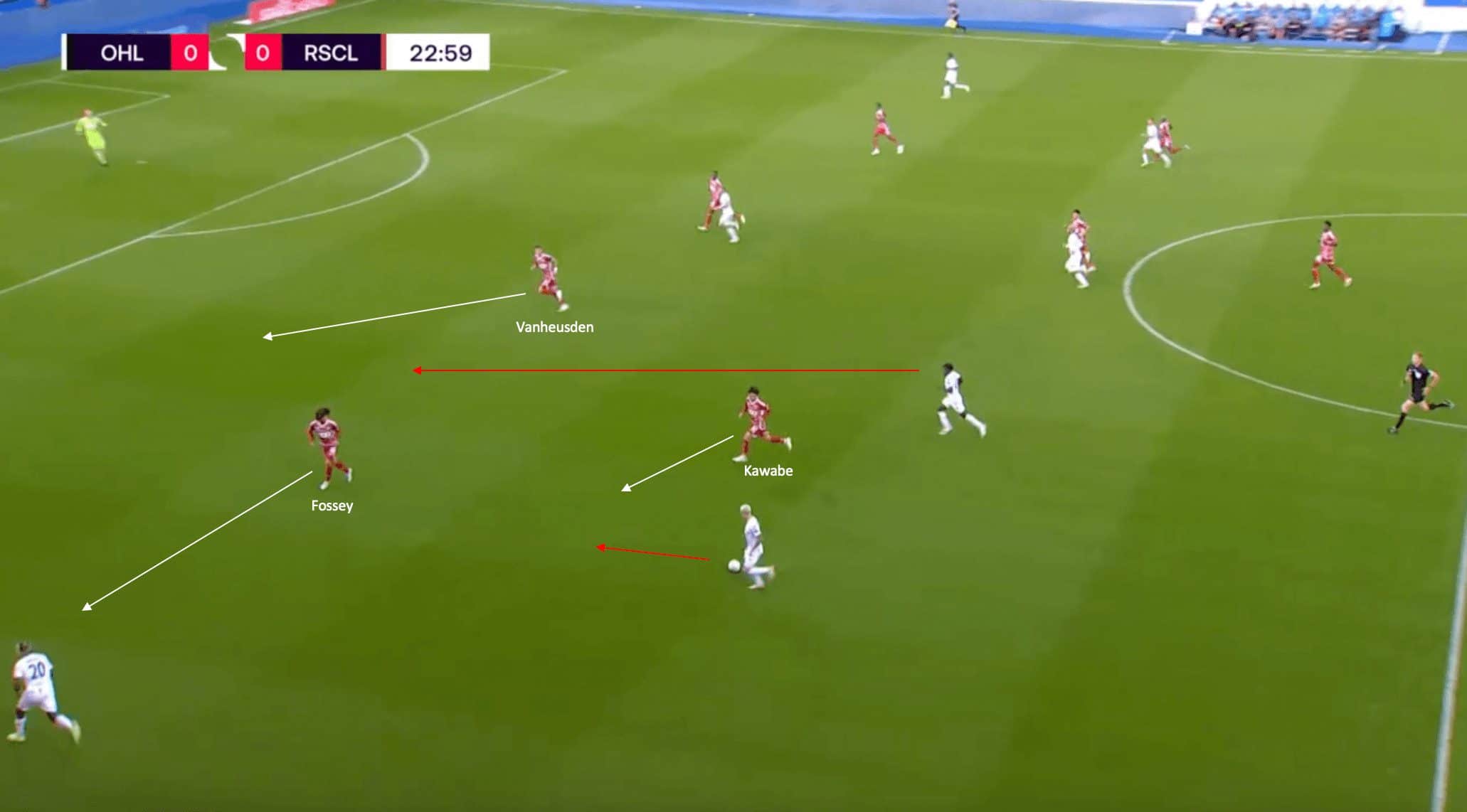
The image above shows another example of the intelligent defensive positioning that Standard Liège have demonstrated in recent matches. In this phase of play above from their match against Leuven, the home side are in possession and are progressing into the Standard final third while having numbers around the ball to help support.
The wide player for Leuven drives forward in possession, with him having options on either side of him, the overlapping fullback that has gone beyond him, and the midfielder making a late run from deeper towards the backline centrally. The Leuven player’s pass is sent wide to the fullback, with Marlon Fossey shifting wide to engage. At the same time, Kawabe shifts wide as well to look to put pressure on the wide player of Leuven, preventing the return pass.
However, this allows the midfielder running from deep to make an unmarked run into the space vacated by Kawabe while also looking to run past Fossey and behind the Standard defence, looking for the one-touch pass from the fullback. Smartly, former Inter centre-back Zinho Vanheusden shifts to cover the space, blocking the passing lane and intercepting the fullback’s pass, clearing the ensuing danger and allowing Standard to reset defensively.
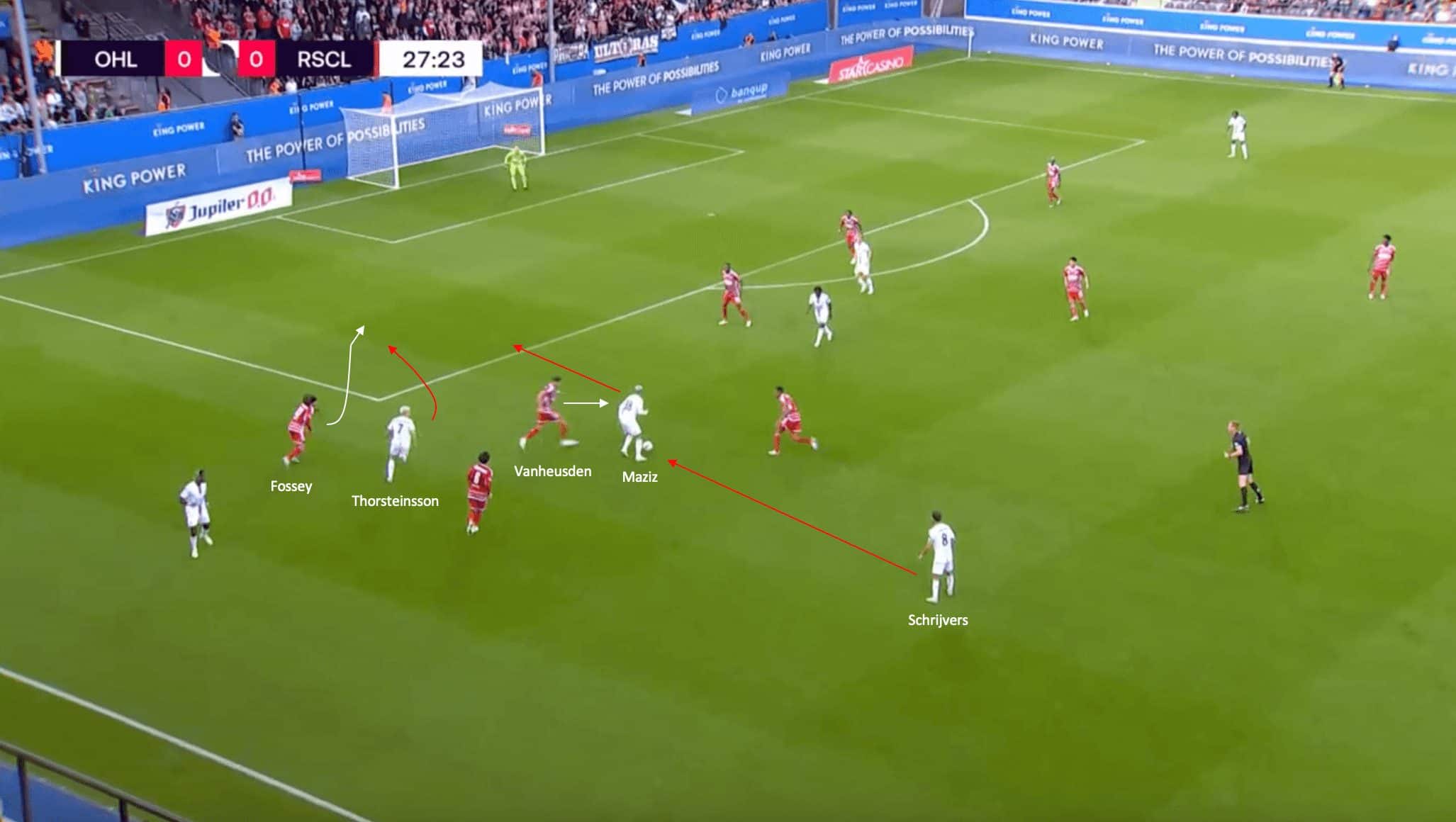
The image above shows another example of the defensive rotations from Standard and how they have looked to nullify opposition attacks in recent matches. This phase of play above, from the same match against Leuven, shows how well they defended an attacking move from the home side that looked to involve plenty of off-the-ball movements to pull the Standard defence out of position.
The ball started with Leuven midfielder Siebe Schrijvers, who was in possession on the edge of the final third. He played the ball into the feet of attacking midfielder Youssef Maziz, who was instantly closed down by Vanheusden. The off-the-ball movements by Maziz, the Leuven fullback and winger Jon Thorsteinsson looked to pull Standard’s defenders all over the place, but they did not bite.
As Vanheusden steps out to engage Maziz, this traps Fossey in a 2v1 against both Thorsteinsson and the opposition fullback, with the United States youth international having to decide between who is the more dangerous player. The American defender chose to stick with the Icelandic international, with Maziz receiving possession and looking to play quickly into the winger’s path.
Fossey does well, getting to the goal side of the Icelandic attacker and allowing him to shield the ball from the Leuven player, eliminating a good attacking move from the Belgian side. This section has been able to show the success Standard Liège have had in recent weeks from a defensive perspective, with it likely Carl Hoefkens will have to rely on this for the rest of the season. However, the attack is beginning to take shape for Standard, as the next section will take a quick look at.
Looking to be dangerous in attacking transition moments
From an attacking perspective, so far this season, Standard Liège haven’t quite gotten off the mark. Through the first 10 matches of the Pro League season, the Belgian side have only scored 10 goals. Recently, they have gotten a bit more clinical in front of goal, with four goals coming in their previous two games, two against both Club Brugge and Leuven.
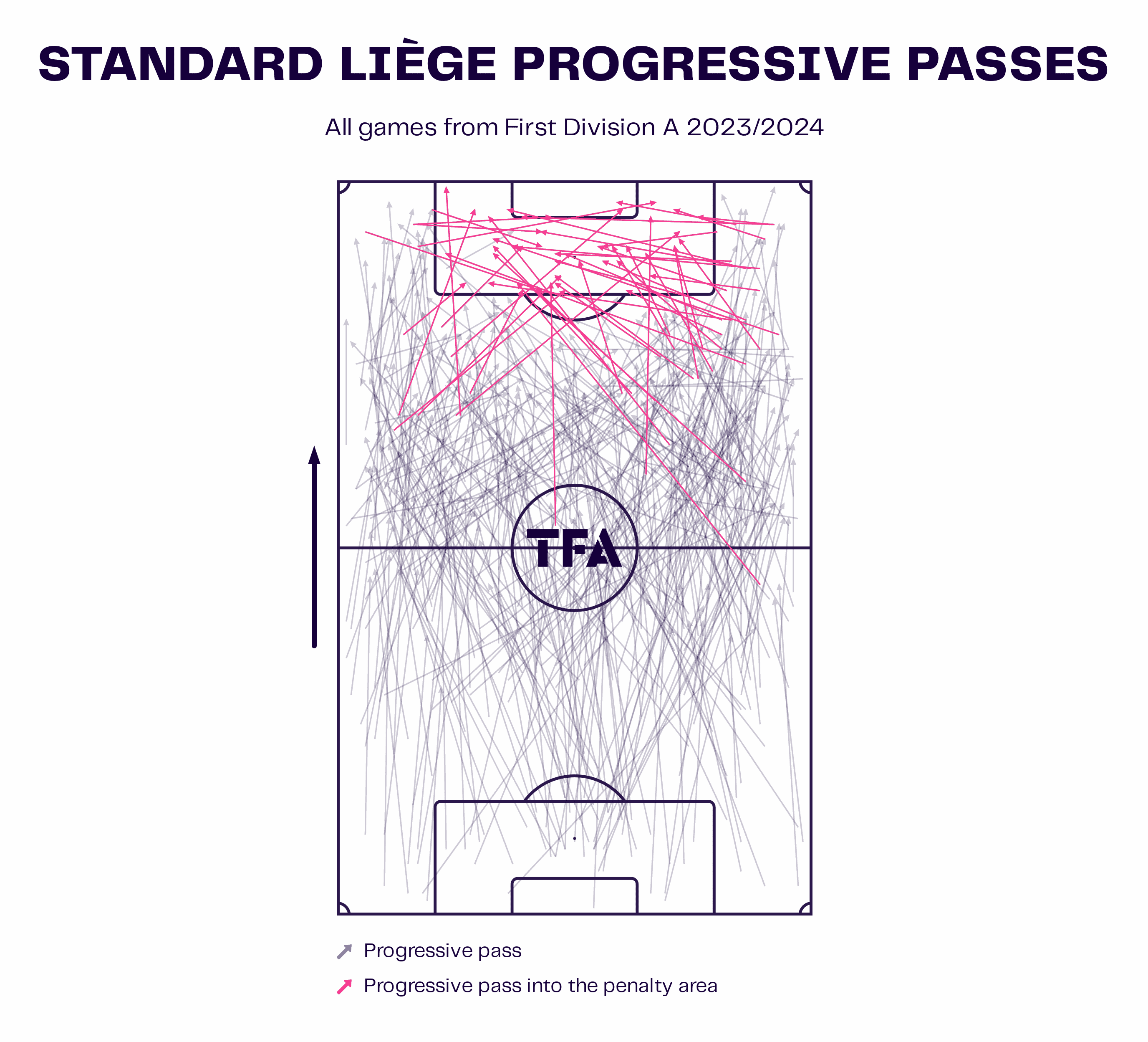
Many of these dangerous attacking moments have come from quick transitional attacks, typically resulting in few passes and playing it long to reach the final third quickly. The data viz graphic above shows the progressive passes from Standard Liège this season, showing their tendency to play longer passes to catch opposition sides out defensively.
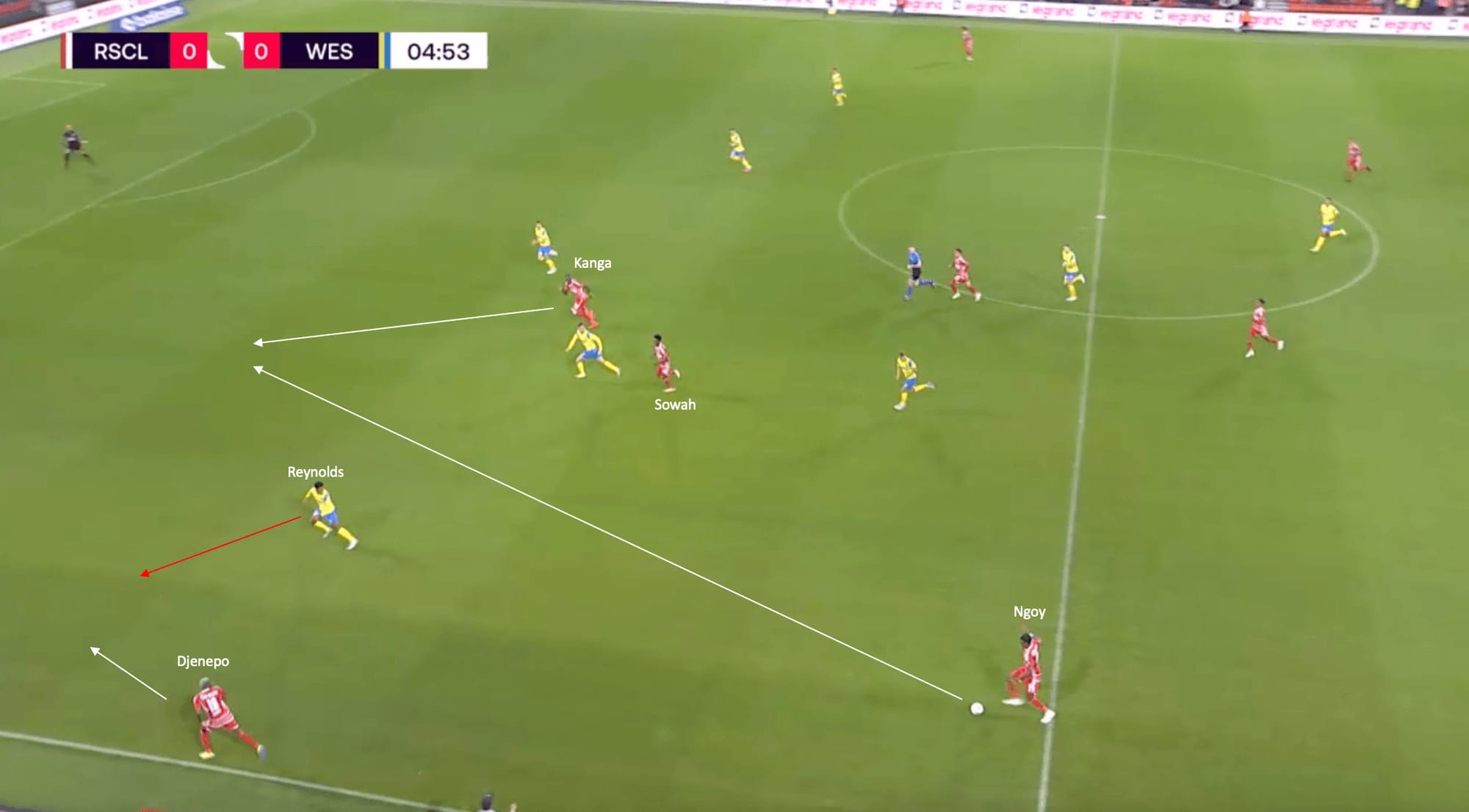
The image above shows an example of a quick transitional attacking move from Standard Liège that results in a free kick for the Belgian side on the edge of the penalty box. After the ball is turned over by Westerlo in the Standard defensive half, the home side look to quickly counterattack, aiming to catch the Westerlo defenders out of position. The ball finds its way to the left centre-back, Nathan Ngoy, who drives forward into the attacking half of the pitch under no pressure from the opposition.
He now has options, with Malian international Moussa Djenepo hugging the touchline and forwards Kamal Sowah and former PSG youth product Wilfried Kanaga centrally. The advanced Standard attackers are numbers even against the Westerlo defenders, with the Belgian side struggling to get back in transition. Former Roma fullback and United States international Bryan Reynolds finds himself isolated and detached from the rest of the Westerlo backline, with him attracted by the positioning of Djenepo on the touchline.
This allows a large passing channel to open up, with Kanga noticing this and making a run off the back shoulder of the advanced central defender and into the space that Reynolds vacated. Ngoy’s ensuing pass is perfectly weighted into the space and the path of the 25-year-old striker, with him reaching the ball first. The defender then fouls the Ivorian, giving Standard a free kick in a dangerous area on the edge of the penalty box. This shows an example of the quick transitional moves that have brought Standard Liège success this season.
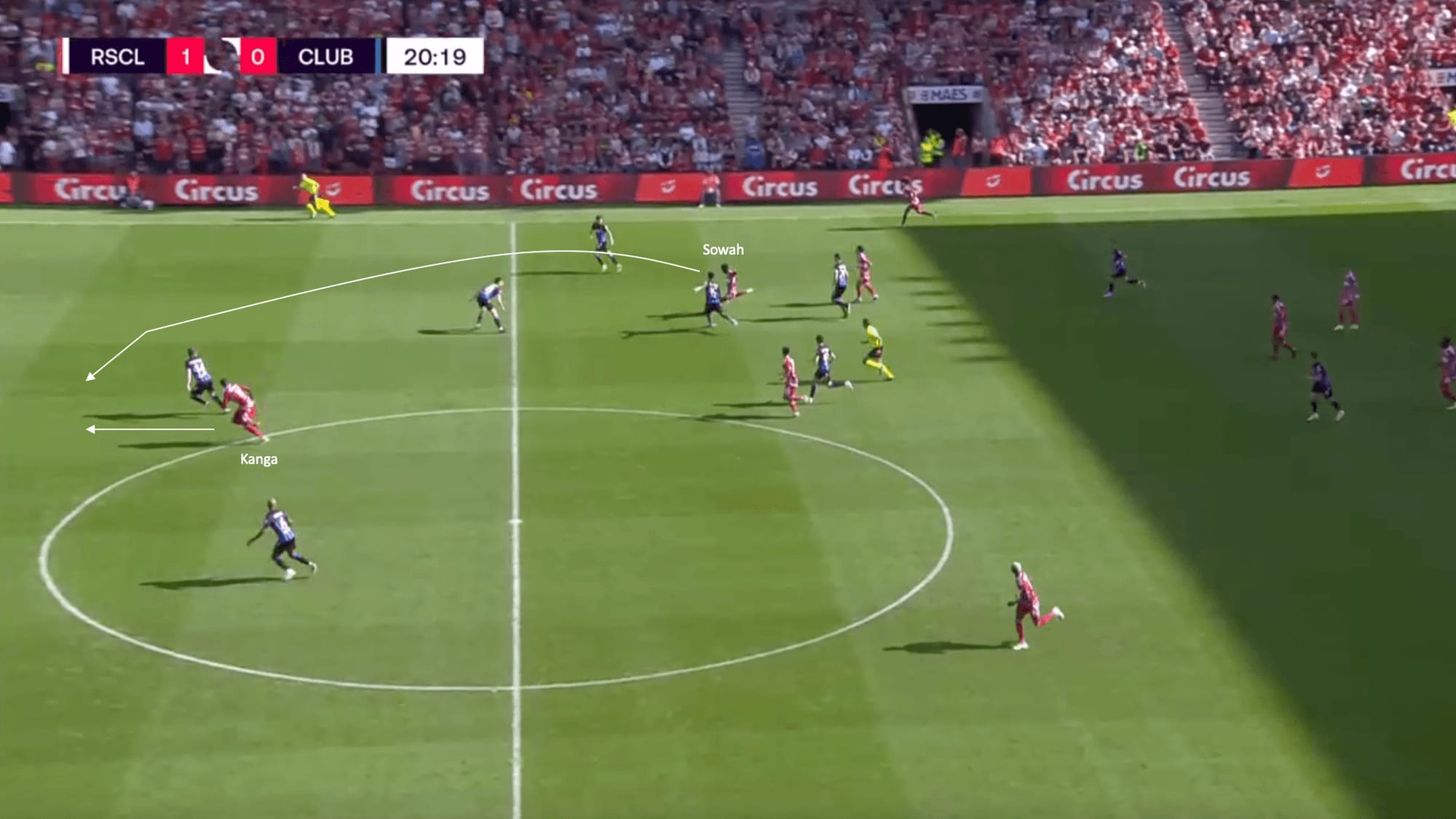
The image above shows another example of the quick transitional moves that have allowed Standard Liège to have success going forward. In this phase from their recent derby match against Club Brugge, the ball is turned over in midfield, with Kamal Sowah dropping into midfield to gather possession for Standard. Wilfried Kanga stays on the Club Brugge backline, with the Belgian side holding a high line.
Sowah is able to play a first-time ball over the top of the backline and into the space behind, allowing Kanga to run beyond the centre-back Brandon Mechele and into the space. Unfortunately, his shot is mishit and misses the target, with a golden chance going to waste for Standard. However, it shows just how dangerous they can be in attacking transition. As this section has shown, under Carl Hoefkens, Standard Liège are starting to become a dangerous side in attacking transition moments.
Conclusion
As this tactical analysis has shown, Carl Hoefken’s tactics at Standard Liège are starting to take shape. While they have not been the most entertaining team to watch at times, they have begun to grind out results, with a lot of that coming down to their defensive solidity that is beginning to come to fruition. Once the attack gets more rounded out, Standard will likely be challenging for a spot in the Championship playoffs reach the end of the Belgian Pro League regular season.





Comments